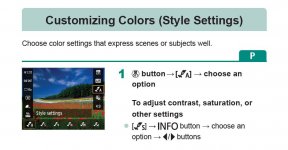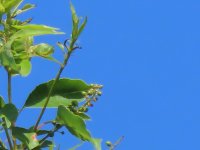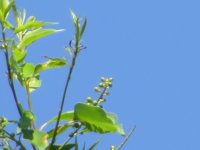After a few weeks now experimenting, I started noticing a few things. What got me started was that when taking a photo with the SX70, the image would appear very focused in the EVF but when shown an almost instantaneous image of the photo after the shot, they almost always appeared less focused. I start to get irritated why that was happening. I also noticed that SX70 photos are
a lot less noisy than the same shot taken with the SX50. To me this was a puzzle. I'd have expected that with the 22.3 MP chip on the SX70, vs the 12 MP chip in the SX50, that the SX70 would be more noisy.
This got me thinking about how the SX70 may be smoothing the JPG too much when it saves. With a cooperative bird, like a cardinal, the SX50 was frequently getting better feather detail than the SX70. So was the SX70 smoothing more aggressively?
After some searching I came to this thread at DPSreview
SX70 HS - Scarce PicStyle settings, idea of Sharpness settings combined with amount of NR: Canon PowerShot Talk Forum: Digital Photography Review
Specifically page 115 in the user manual on this "Customizing Colors (Style Settings)". This is all there is in the user manual. Contract, saturation or
other settings. Searching the user manual for the word "sharp" or "sharpness" gets zero hits. Poor user manual. So under the pencil and S, press Info button and you can adjust the sharpness, and 3 other settings. The default sharpness is in the middle and I pushed to up to max. This can be saved under C1 or C2 along with all the other settings I use.
So outside this morning, two comparison shots of the top of a large tree with leaves and berries. Both of these images are taken with each of the camera's maximum reach and with the 2X teleconverter and then cropped to about the same area.
I took several photos with each camera and chose the best of the lot for each to attach. Most of the SX70 shots were actually better than the SX50 shots. I have not yet found a cooperative cardinal to try this on a live bird yet but the SX70 is getting improved results on other static objects like the tree leaves below. I am also really surprised that the SX70 is not noisier than the SX50.
Of course this is ideal conditions. I know that both cameras will fall down when the lighting is not perfect but that's expected.
Photos:
1. Page from the user Manual
2. SX70 photo
3. SX50 photo











